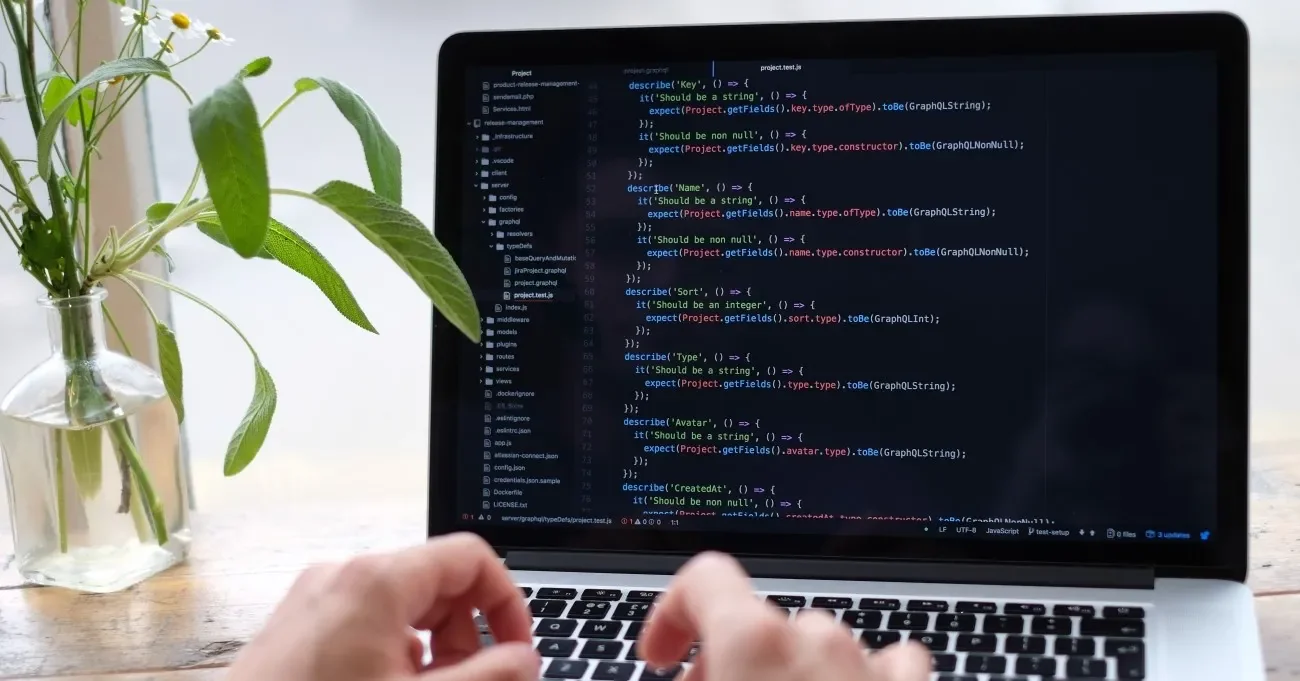You’ve got a shiny new app idea and you are ready to take the mobile world by storm. Well, hold on to your wallets because this year, the mobile app developer cost will be higher than ever before.
Let's be real, no one wants to spend a fortune on app development. But unfortunately, it's not as simple as just hiring a developer and telling them to "make it happen." There are a multitude of factors that come into play when determining the mobile app developer cost, including the platform it's being built on, the complexity of the app, and even the development team model.
But don't let the cost scare you away from your app dreams. To help you in this endeavor, we have prepared this guide where we're going to break down the exact costs for different platforms and discuss the factors influencing these costs.
By the end of this article, you'll not only learn all there is to know about mobile app development costs but also understand how you can keep these costs under control.
Why Mobile Apps Are Important For Businesses
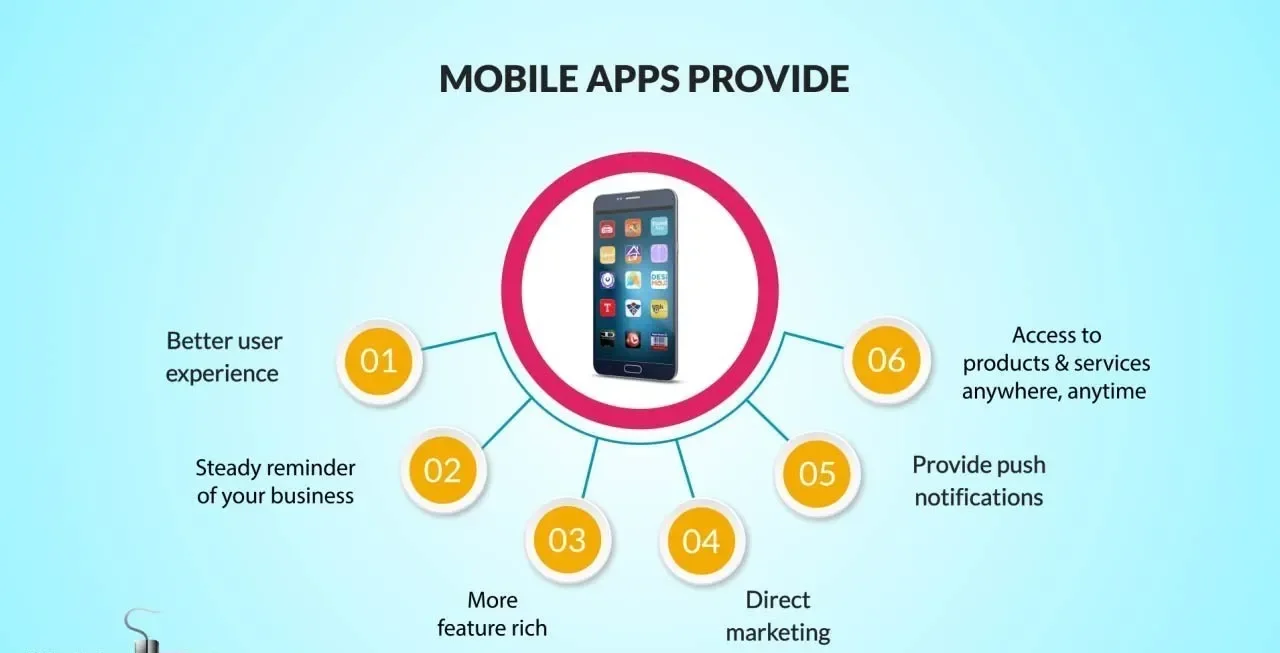
Mobile apps have become an essential tool for businesses and organizations over the years. They offer companies the opportunity to expand their customer base, increase revenue, and streamline operations by providing convenient access to all their products and services.
Mobile apps are also valuable for providing users with convenient and personalized experiences. They allow users to access information and services on the go and provide push notifications and other features that keep users engaged and informed. Mobile apps are also effective for organizations to build brand awareness and establish a solid online presence.
Understanding The Mobile App Development Cost - Why It Is Important?
Cost is a significant factor when developing mobile apps because it directly affects the project's budget and resources. Understanding the costs associated with developing mobile apps can assist you in making informed budgeting and resource allocation decisions.
You can also set realistic financial expectations or SMART goals for your mobile app development project and budget for any unexpected costs that may arise during development.
And here's the thing…
Understanding the costs can really help businesses in determining the potential return on investment of their apps and making pricing and monetization decisions. The app cost is a big deal when it comes to making an app successful, so it's important to keep it in mind while you're planning and building the app.
Now let’s take a look at some important factors that influence app development costs.
8 Factors That Impact The Cost Of Building A Mobile App
Before estimating your cost for building a perfect mobile app for your business, it’s vital to know what factors impact the most. Let’s discuss these:
1. Platform (iOS Vs. Android)

One major factor that impacts the cost of building a mobile app is the platform it is being built for. The two most popular platforms are iOS and Android, and building for each can have different costs.
Building for iOS typically requires knowledge of Swift or Objective-C and the mobile appdevelopment process is usually more streamlined and consistent due to the closed nature of the platform. It can make development quicker and less expensive. However, iOS apps also have to go through a more rigorous app review process which could lead to more development time and more cost.
On the other hand, building for Android requires knowledge of Java or Kotlin, and the development process can be more complex due to the platform's wide range of devices and screen sizes.
However, the Android app review process is more relaxed than the iOS, which could lead to a faster development time. Another aspect to consider is the willingness of iOS users to pay more for the apps. So if an app is geared toward a more upscale market, an iOS version may be more important.
2. App Complexity (Basic Vs. Complex Features)
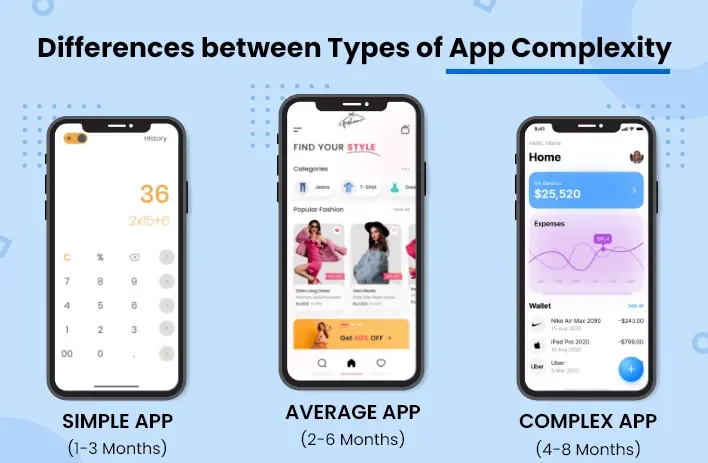
Another important factor impacting the cost of building mobile apps is the app's complexity. A basic app with limited features will be less expensive to develop than a complex app with many features. These apps are typically quicker and easier to develop and may include:
- A simple user interface
- Compatibility with a limited number of screens
- Basic functionality like data storage and retrieval
On the other hand, a complex app includes advanced features such as:
- Multiple screening
- A sophisticated user interface
- Complex functionality like real-time data synchronization, integration with third-party services, and usage of advanced technologies like augmented reality or machine learning
These apps require more development time and resources and are, therefore, more expensive to build. The features' complexity also affects the app's testing and maintenance cost, as more complex features take more time to test and maintain, hence increasing the costs further.
3. Design And User Experience
Mobile app design can include visual elements such as color schemes, typography, and iconography, as well as the layout and flow of the app. The complexity and level of design can also affect the cost of building your mobile apps. For example: a simple and basic design will be less expensive than a more complex one.
A simple app design may have a limited color palette, basic typography, and a straightforward layout. On the other hand, a complex app design may include a broader range of colors, custom typography, and more intricate layouts.
User experience (UX) refers to how easy and intuitive the app is to use. A good UX design will make the app easy to navigate and the user can perform tasks with minimal effort. A poor UX design, on the other hand, will make the app confusing and challenging to use.
Design and UX also play a crucial role in the app’s success. A well-designed and user-friendly app is more likely to be used and recommended by users, resulting in more downloads, better views, and higher revenue.
4. Backend And API Development
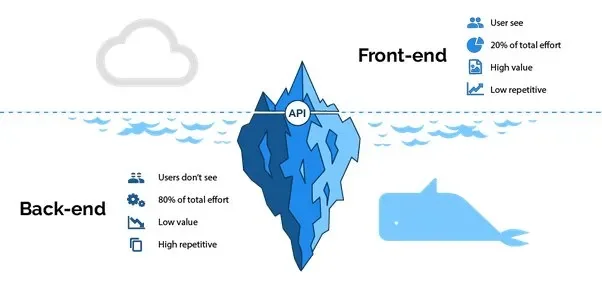
Another factor that can impact the cost of building a mobile app is backend and API development. Backend development refers to the app’s server side, where the data is stored, processed, and delivered to the mobile app. On the other hand, API development is the creation of Application Programming Interfaces (APIs) that enable the mobile app to communicate with the backend and other external services.
A basic app may only require a simple backend, such as a database, and a few server-side scripts to handle basic functionality like data storage and retrieval.
However, more complex apps require a more robust infrastructure, such as a Content Management System (CMS), a cloud-based infrastructure, and integration with other external services like social media, payment gateway, and more. All these factors contribute to a higher development cost.
API development is also an important aspect of backend development. A basic app may only require a few simple APIs. In contrast, a more complex app may require many APIs to handle different functionality and communicate with various external services, making the development cost go up.
5. Testing And Quality Assurance
Testing and quality assurance, also known as QA, can greatly affect the cost of building a mobile app. These processes are crucial for ensuring that the app is of high quality and free of bugs. Different types of testing, such as unit testing, integration testing, acceptance testing, and more are involved in this process.
A basic app may only need a limited amount of testing and QA, while a more complex app would require more extensive testing and QA to ensure all features are functioning correctly and the app is free of bugs. This increased amount of testing and QA can increase the development cost.
It's also important to note that testing and QA play a vital role in the app's success and in receiving feedback from target customers. An app that is not properly tested may contain bugs, resulting in poor reviews and decreased user engagement, which can ultimately drive up the cost of resolving these issues.
6. Development Team (In-house Vs. Outsourcing)
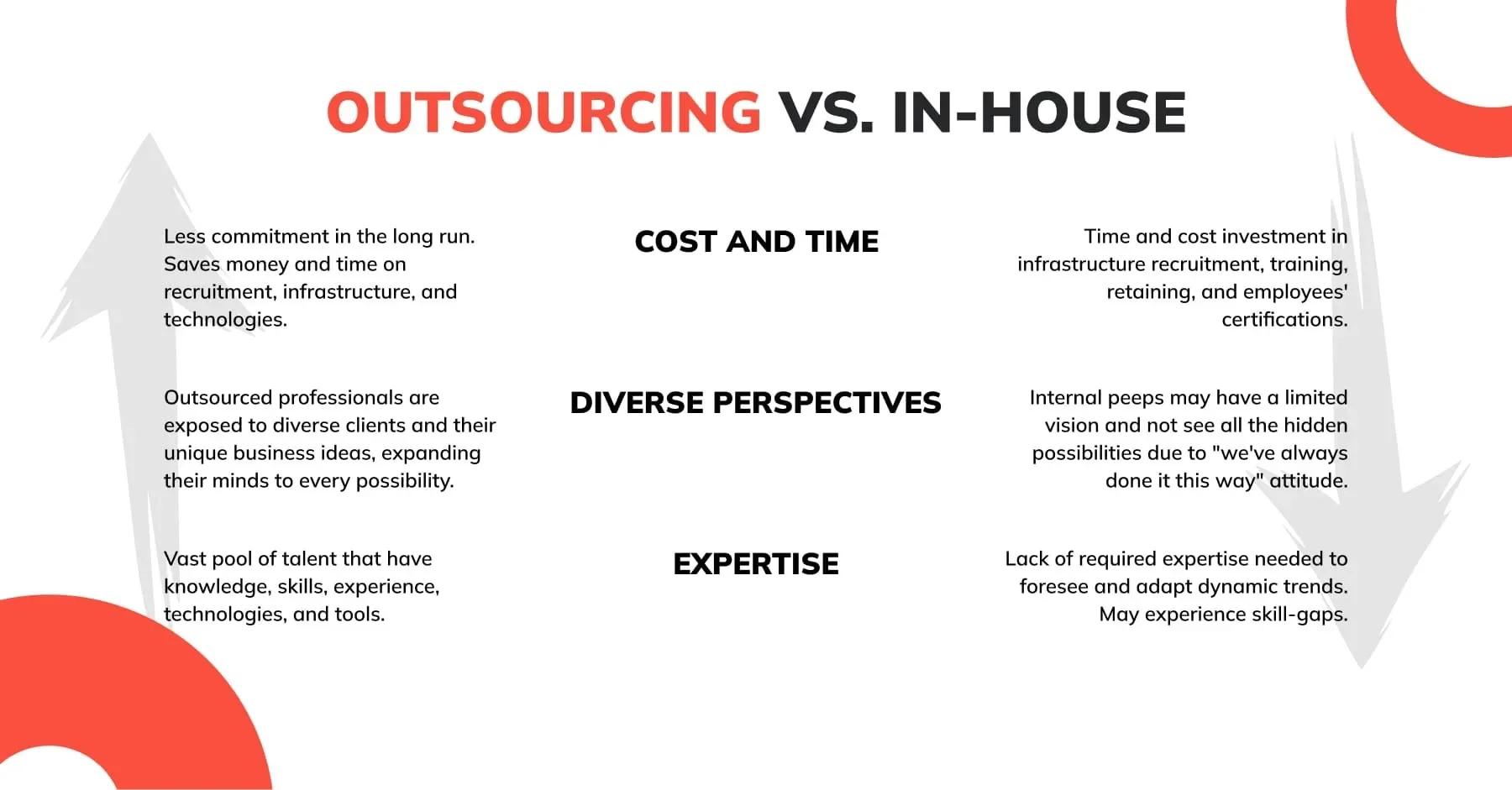
When it comes to building an app, who you choose to work with makes a big difference in how much it will cost. You have two options: an in-house team or outsourcing.
An in-house team is made up of people who work directly for your company. It can be more expensive because you have to pay their salaries, benefits, and other costs that come with having employees. And keep in mind, an in-house team may not have all the skills and expertise needed to develop the app.
On the other hand, outsourcing is when you hire a third-party developer or agency to build the app for you. It can be cheaper because you only have to pay for the development cost and not for the overhead costs. Plus, outsourcing gives you access to a pool of developers with a wide range of skills and expertise.
If you're thinking about outsourcing your project to a mobile app development company, there’s no better option than Aloa. What sets us apart is our rigorous screening process. We handpick the best of the best who can bring your app to life at a fraction of the cost.
With Aloa, you can be confident that the developers working on your app have the skills, expertise, and experience to deliver quality results. Not only will you get a great app but also save money.
7. Maintenance And Updates
So you've built your mobile app and now it's time to think about maintenance and updates. It's important to remember that even after your app is launched, it'll need ongoing attention to fix bugs and address any issues that come up.
Let's not forget about adding new features and making sure it works well on newer devices and operating systems. This can all add up and have a big impact on your app development budget. And it's important to keep in mind that the more complex the app, the more maintenance and updates it'll likely need.
The app maintenance costs can also vary depending on the platform the app is built for. For instance, an iOS app may require more frequent updates to ensure its compatibility with the latest iOS versions.
8. Specific Requirements And Geographic Location
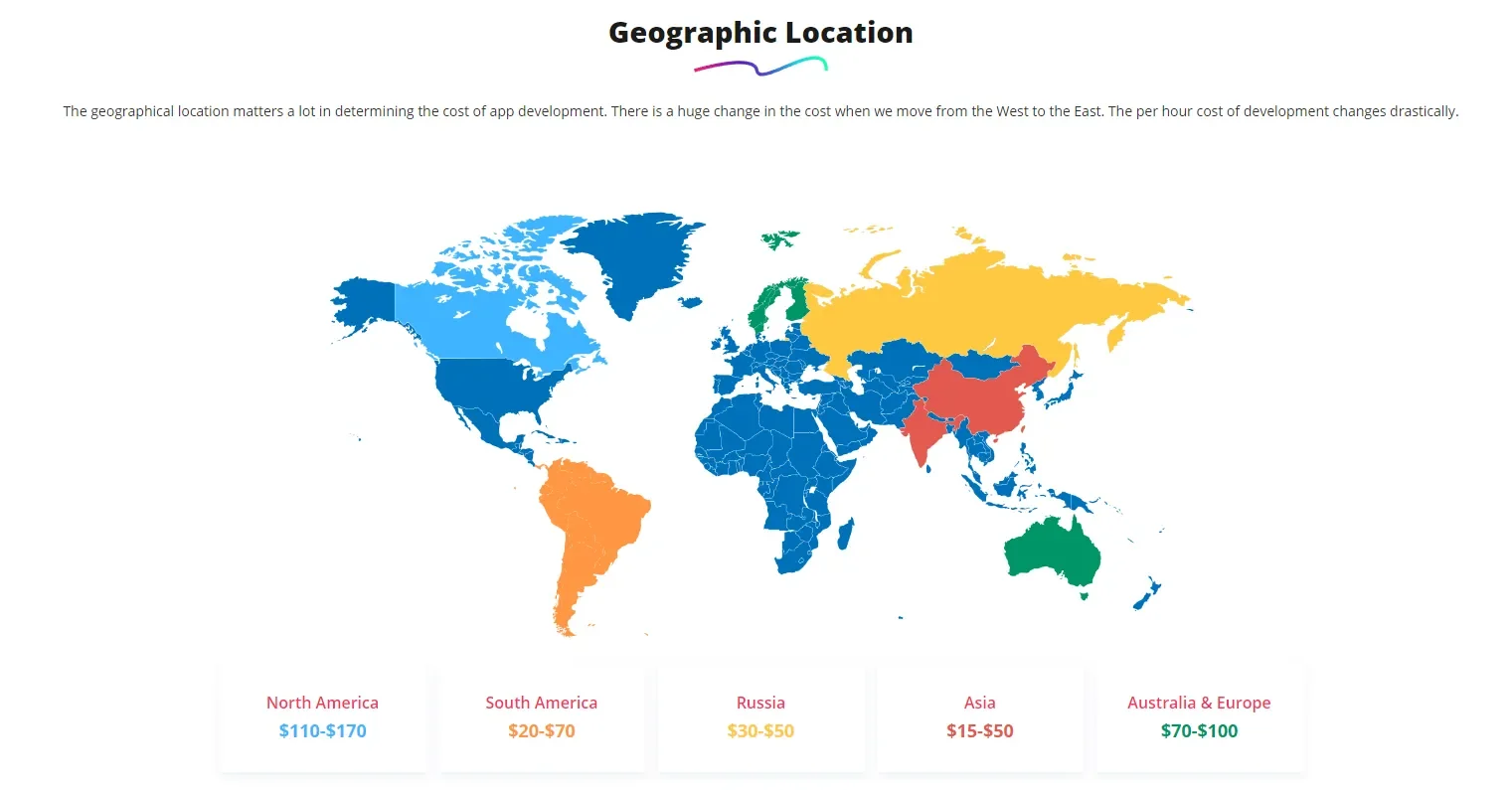
Cost can also vary depending on the project’s specific requirements and geolocation. An eCommerce app that requires integration with careful inventory system management may cost more than a similar app that uses generic solutions.
Similarly, the location of the development team can also have a significant impact on app-building costs. Developers in North America or Western Europe tend to charge more than those in other parts of the world, say India or Pakistan.
So you know the key things that can add up when it comes to building a mobile app. The big question now is, how much? Don't worry, we'll cover that in the next section.
How Much Does It Cost To Build A Mobile App?
Depending on various factors discussed above, the estimated cost of building a mobile app in 2024 is:
I. Cost Of Building A Basic App
The cost of building a basic app can range from $5,000 to $50,000. Simple games or basic utilities typically cost less as they require less development time and fewer resources. These apps can be built by a small team of developers and completed within a few months.
II. Cost Of Building A Medium-Complexity App
The cost of a medium-complexity app can range from $50,000- $150,000. eCommerce or social media apps are more complex and require more development time and resources. These types of apps typically include features such as user accounts, payment processing, and proper data management. They may also require integration with external services like inventory management systems or courier services for delivery or shipping.
III. Cost Of Building A High-Complexity App
A high-complexity app development cost can range from $150,000 to $500,000+. Augmented reality or on-demand service apps are among the most complex and therefore have the highest costs. These apps require specialized skills and technologies such as 3D graphics or real-time data processing. They may also require significant testing and optimization to ensure a smooth user experience.
It’s important to remember that the cost of app building is not just about the development cost but also the investment in testing, design, and project management. Good project management and communication help to keep your project on track and within your budget.
Now that we have a better understanding of the costs associated with different types of app development, let's explore some strategies for keeping those costs under control.
5 Proven Ways To Reduce The App Development Cost & Increase Your ROI
If you're new to this and planning to build your first mobile app, the cost might be something that's on your mind. But you can reduce your hidden app development costs by following some excellent strategies that are tested to work. Let’s uncover these:
A. Starting With A Minimum Viable Product (MVP)
An MVP (Minimum Viable Product) is a version of your mobile app that has only the core features and functionality that is necessary for your app to be useful and provide value to your users. By starting with an MVP, you can validate your app idea and gather feedback from your customers/users before investing in additional features.
This process can help you avoid building unnecessary features and spending money on development that may not be needed. Additionally, an MVP allows you to test the market and gauge the demand for your app, which can help you make more informed decisions about future development.
B. Using Pre-Built Components And Templates
Many app development frameworks and libraries include pre-built components and templates that can be used to speed up development and reduce costs. These components can include things like user interface elements, navigation tools, and common functionality such as push notifications or data storage.
By using pre-built components and templates, developers can focus on building the unique features of the app rather than spending time on repetitive tasks.
C. Outsourcing App Development
Outsourcing app development to a team in a different country can help reduce your app-building costs. Countries like India and Pakistan are known for having lower labor costs than countries like the USA, UK, or Canada, which can result in significant savings.
It’s important to ensure that the outsourced team has the necessary skills and experience to deliver a quality product in time like Aloa, which offers dedicated and custom mobile app development services with 100% client satisfaction.
D. Using A Low-code Or No-code Development Platform
Low-code and no-code platforms allow developers to create apps using a visual-drag-drop interface rather than writing code. This can help reduce development time as well as cost. It makes it easier for non-technical users to create their apps.
E. Reusing Code From Existing Apps
This can be a great option if you can find code that's similar to what you need for your app. By using pre-existing code, you can save time and money that would have been spent on developing new code from scratch. This process can include things like common libraries, data models, and user interface components.
Just make sure to double-check the license and usage guidelines for the code you plan to reuse and also test it thoroughly to ensure that it works well with your app.
Conclusion
The cost of building a mobile app can vary greatly depending on a number of factors. Some of the key considerations include the complexity of the app, the platform it will be built for (iOS or Android), and the experience level of the development team.
On average, you can expect to pay anywhere from $5,000 to $500,000 or more to have a mobile app developed. However, remember that the cost of building an app is not just about the initial development but also includes ongoing maintenance and updates. So it's important to have a clear budget and realistic expectations before starting the development process.
The most important factor in bringing the mobile app developer cost down is assembling the right development team. Aloa is an excellent app development agency for businesses looking to find the perfect developers and designers for their mobile app development.
With our team of highly skilled mobile app developers, we guarantee that your app will be delivered on time without any compromise to quality. If you are looking to get your app development underway, get in touch with us at [email protected].

